These are the four things about you that make magpies swoop – as Aussie schoolgirl wins awards for her global study revealing what they are
An eight-year-old Australian schoolgirl has won two prizes for her global research showing which magpies are most likely to be targeted when they dive-bomb people.
And according to third-grader Emma Glenfield, it all depends on your height, weight, gender and hairstyle.
Using Lego and creating her own QR code, the young girl from Wentworth Falls, in the Blue Mountains in NSW, put together the survey which went viral and attracted 30,000 participants from around the world.
And what started from a love of mathematics and curiosity about a particularly aggressive local magpie turned into an extensive scientific study.
The surprising results came from Emma’s brilliant idea to ask participants how often they were bombarded by magpies and compare the details with their physical characteristics.
Based on the statistics she collected from people who had encountered magpies during the breeding season, Emma concluded that the most targeted people tended to be tall, balding men who were overweight or large in size.
She discovered that the main target of her local park’s ‘evil magpie’ – who she called Mr Swoopsalot – was embodied by one particular participant, Mr Q.
He was ‘masculine, tall, thin above, short beard, stout. Was constantly fluctuating’. Another man, Mr Z, had ‘no hair, average height, no facial hair’ and was seen ‘swimming a lot’.
Overall, men who were bald on top were more than twice as likely to take a dip than men with long hair.
People 1.83 meters or taller were more than twice as likely to be targeted than people under 160 centimeters.
Eight-year-old Australian schoolgirl has won two awards for her groundbreaking research into who magpies target when they dive-bomb people
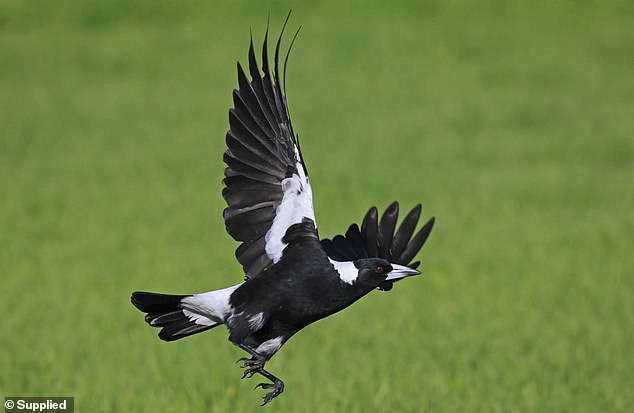
The third-grader’s survey went viral after she came up with the brilliant idea of asking participants how often they were bombarded by magpies and comparing their physical features.

Emma Glenfield, 8, came up with her own QR code and asked surprising questions to people who had encountered magpies, with some interesting results
Using a body mass index formula, Emma found that high BMIs were more likely to be targeted.
She found that men were more likely to have crashed in the past 12 months, and women were more likely to have never crashed.
While 11 percent of targets were pecked in the face or ear, women were more likely than men to be injured.
She wrote in her survey: ‘MY CONCLUSION: Mr. Swoopsalot does not like tall, stocky men with thin or receding hairstyles. He doesn’t like hats.’
Emma, who is about to start year four at Blue Mountains Grammar School, had never used Excel spreadsheets before so she made her graphs from different colored Lego tiles.
She was encouraged to do so by her teacher Luke Carr – a balding man who has often been ambushed by magpies – as an entry in a maths competition.
Titled Born To Be Wild, it won the Year 3 individual prize in both the NSW Investigating With Mathematics competition and the National Math Talent Quest.
Emma’s idea originally started with just one question: ‘Why do magpies show up and want to hurt us?’
But that idea snowballed when she created a questionnaire using SurveyMonkey and then created a flyer.
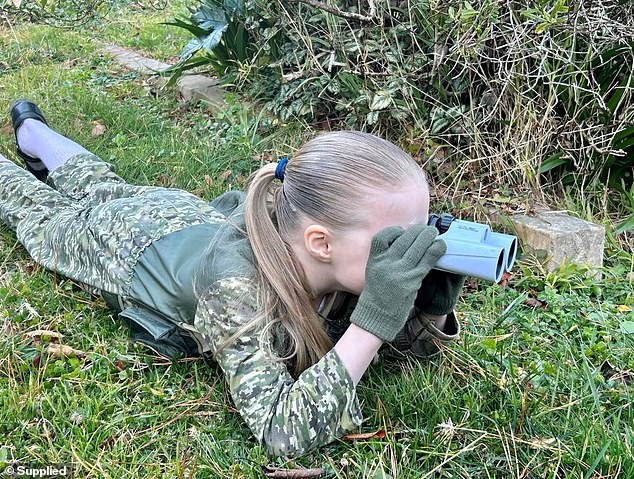
Embracing her participation in the maths competition, Emma observed magpies in her local park and in particular an aggressive male bird that targeted fathers picking up their children from school
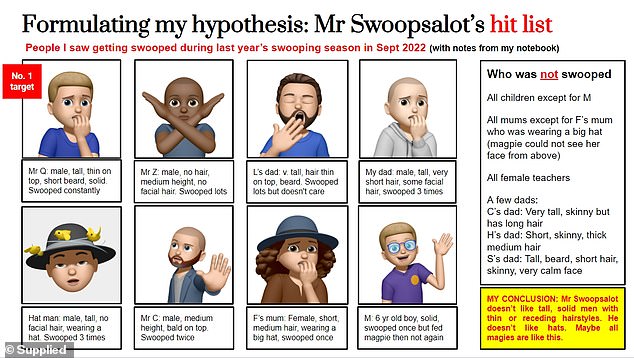
Eight-year-old Emma concluded that the aggressive magpie in her park ‘doesn’t like tall, sturdy men with thin or receding haircuts. He doesn’t like hats
‘I started to love QR codes,” she explains in the study, which consists of a 45-slide presentation on topics such as the magpie’s life cycle and the bird’s symmetrical black and white markings as seen from the back.
Emma discovered that only male magpies try to protect their nests for six weeks from September, when the eggs are laid and the young emerge.
The reason for magpies’ fierce defense of their territory is that the young do not emerge with feathers and are therefore more vulnerable in their early lives than other species.
When she mapped the locations of the ‘evil’ magpie’s roosting tree in her local Pitt Park, she concluded that it had a territory of 345 metres.
Emma said she was initially ‘scared and nervous’ about asking people to take part in her research.
‘But I did it anyway. “I also asked the high school teens as they walked to the train station,” she said.
Then someone posted her flyer on Reddit and she was bombarded with comments from all over the world.
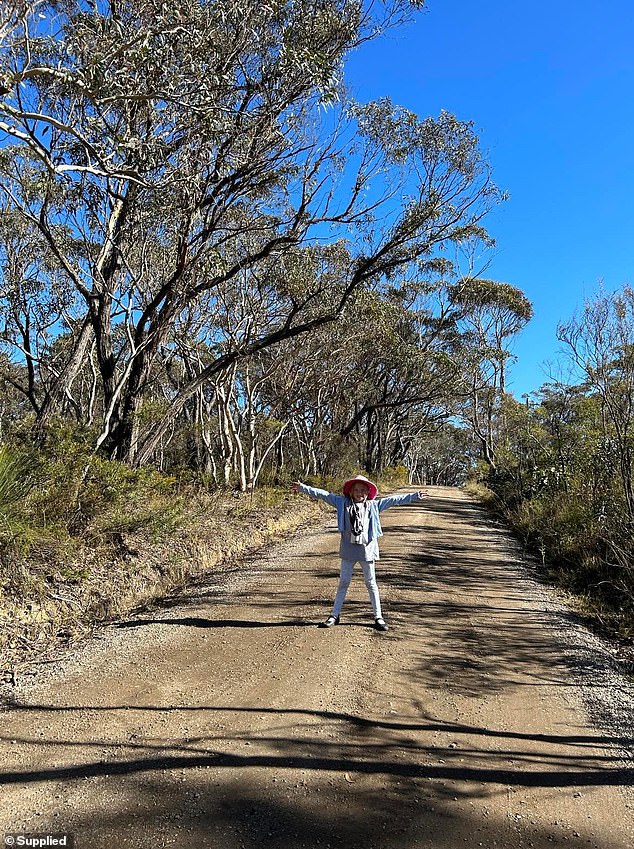
Emma Glenfield (above) won state and national maths competitions with her survey on magpies and came up with a world first of the species the birds target in the breeding season
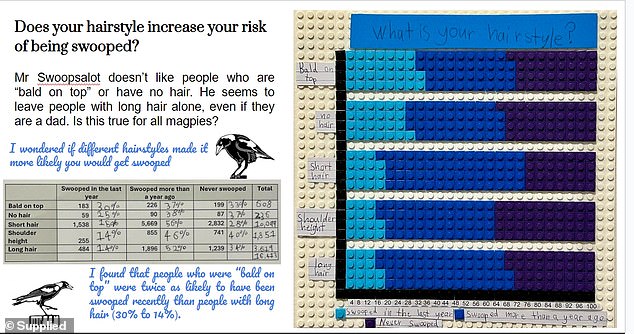
Magpies more often target men with balding heads, Emma concluded in the research she did with Lego for her graphs
Her local magpies’ victims were usually “dads who went to the park and picked up their kids at school, ran away and used everything from umbrellas to hats to avoid it.”
Her mother, Kristy Glenfield, told Daily Mail Australia that Emma believed the magpie was attracted to larger-bodied males because they seemed “more threatening”.
The Pitt Park monster dove her father, Jamie, who is tall and, although short, has overwhelmed her three times.
Emma, who even wrote a song about the magpie, asked participants if they liked magpies and found that even some of those who had been shot did, with six times as many people liking the birds than not.
The schoolgirl, who loves maths, science and technology, as well as drama and singing, hopes to combine her favorite subjects in what she decides to do when she leaves school.
But for now, her mother said Emma was still interested in magpies.
‘Everyone has a story about magpies. She had no idea how much magpie love existed,” Mrs Glenfield said.
